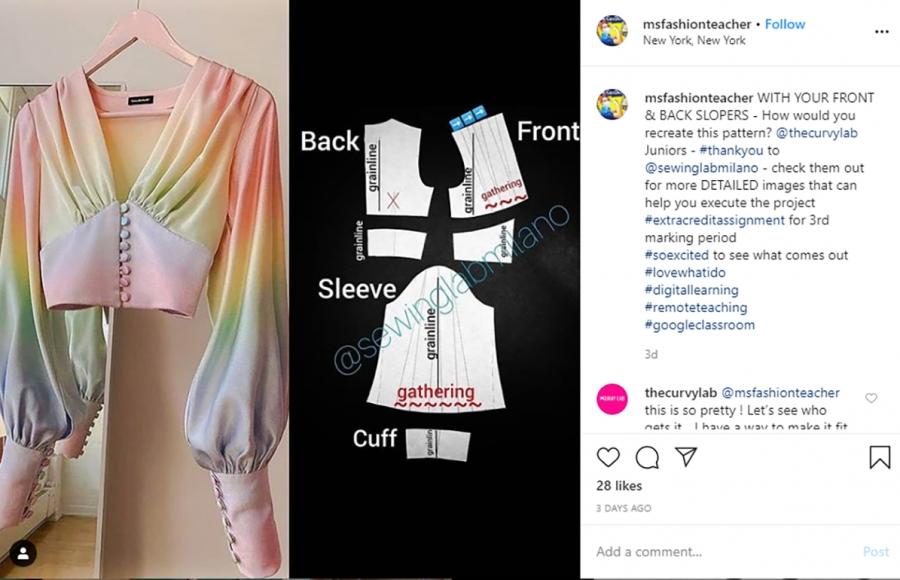
HS of Fashion Industries students are using paper patterns called slopers to design clothing at home after watching tutorials their teacher posts on Instagram.
When the coronavirus crisis forced city public schools to make the transition to remote learning, career and technical education teachers faced an additional hurdle: how to recreate the hands-on learning that is so important for getting students career ready.
But CTE teachers are meeting that challenge head on, as always.
Laura Parker says the biggest obstacle for the culinary arts and hospitality programs at Long Island City HS in Queens is not knowing what supplies students have.
“With families only being able to secure food for their day-to-day needs, it’s not conscionable to ask them to use existing supplies to make the recipes they are learning,” Parker said.
So students work with whatever they have. Some have shared unique dishes based on their ethnicities. Others have reverted to program basics — making things like cupcakes or fettuccine Alfredo. “Some seniors who have supplies are working on fresh pasta — making dough, rolling it out by hand and making a sauce to go with it,” she said.
Even if they only have ingredients for sandwiches, students can still use their skills and describe their techniques on video. And hospitality students can be creative with the supplies on hand to set up family dinner tables.
Before schools closed, Rosa Chavez of the HS of Fashion Industries in Manhattan prepared packets that included fabric and paper patterns called slopers. “I create tutorials and put them on my Instagram channel, and students follow step by step how to create a skirt or a bodice using their slopers,” she said.
Chavez invented a twist on Museum at Home, a Getty Museum challenge that asks participants to choose and research a painting by any painter from any era and then recreate it with items from home. Instead, she has students choose artwork focused on a garment and recreate the look using whatever is available, even if it’s a towel or a sheet.
Graphic design students at Thomas Edison HS in Queens still had their borrowed school cameras, so teacher Evelyn Loveras is giving them photography projects featuring household items. One assignment was to photograph objects that can portray letters, such as a plate for “0” or a knife for “I.” They upload photos on Google Classroom where she can see “their use of flash and whether they were able to capture lines or light,” she said.
In other classes, students are designing protective masks or posters about preventing coronavirus. They create patterns, choose colors, typography and other details and employ hands-on aspects including photography and drawing with pens, crayons or colored pencils.
David Sarno, a teacher in the automotive program at Ralph McKee HS on Staten Island, started off uploading textbook chapters. “Then we got lucky,” Sarno said.
Electude, an online subscription service based on gaming principles, gave automotive instructors free access during the pandemic. The site has hundreds of interactive modules students can complete at their own pace, and Sarno can monitor their progress.
“If they’re using a multimeter to do electrical work, they move the wires to the correct positions with their mouse,” he said.
Electude isn’t exactly the same as working on an actual car but, Sarno said, “it’s much more exciting than reading a chapter and answering questions.’’
The ways teachers are making remote learning work in CTE are as varied as the programs themselves.